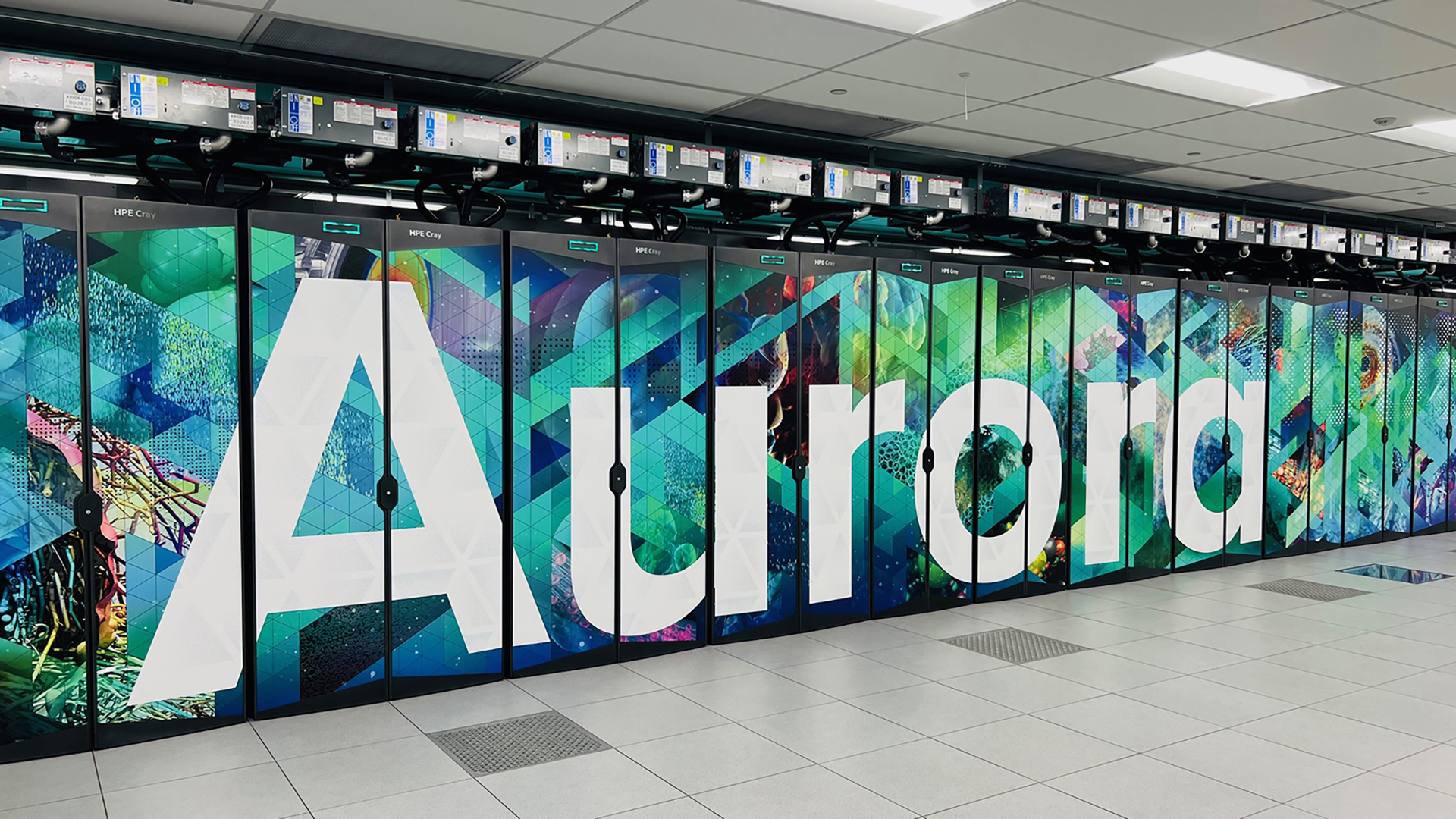

Aurora isn’t just a supercomputer, it’s a decade-long engineering effort that redefined what’s possible in large-scale computing.
With the Aurora Supercomputer now officially open at Argonne National Laboratory, Intel is reflecting on the challenges and breakthroughs behind one of the world’s most ambitious high-performance computing (HPC) systems. Designed to deliver over one exaflop of compute performance, a billion billion operations per second, Aurora is now among the most powerful research tools ever built.
But it’s not just the scale of the system that stands out. For Intel’s engineers, Aurora became a proving ground for technical innovation, systems-level collaboration, and personal resilience.
“Seeing that initial rack and blade was more than hardware coming alive - it was the first glimpse of what would become a historic machine,” said Olivier Franza, Aurora Principal Investigator and Chief System Architect.
Aurora’s journey started years ago in Intel’s Oregon lab, where engineers first powered up a single production blade. It was a moment of anticipation and the beginning of a long road that would challenge every part of Intel’s design, engineering, and integration processes.
Building an exascale system pushed the company into new territory. Aurora required novel processor architectures, high-bandwidth memory, advanced accelerators, and a tightly integrated HPC software stack. In parallel, the Intel team had to develop a scalable communication framework, support for large AI models, and fault-tolerant storage, all while coordinating with Argonne and hardware partner HPE.
“We had never tackled anything of this scale,” said Bill Wing, Aurora Lead Program Manager. “This project challenged us to evolve, not just as engineers, but as a systems company.”
From the outset, Intel embedded its teams directly with Argonne researchers. Engineers worked side-by-side, debugging, integrating, and adapting to real-time feedback. There was no firewall between customer and supplier, the two groups operated as a single team.
This level of collaboration proved vital. Aurora wasn’t just a hardware delivery, it was a joint development effort that stretched across node design, software optimisation, and platform validation. System challenges only fully emerged when all components came together at scale.
“Unlike typical Intel projects, we worked shoulder-to-shoulder with Argonne,” Wing noted. “That’s where trust was built.”
Intel’s roadmap for Aurora was already ambitious, and then COVID hit. Supply chain constraints, limited lab access, and remote debugging became the norm. Engineers rotated through on-site shifts, often working in basement labs in Chicago for weeks at a time. Hardware had to be debugged in real time, often with minimal room for error.
“This project demanded resilience at every level,” Wing said. “From firmware to thermals to AI model scaling, there wasn’t a single part of the system that didn’t get pushed.”
Despite setbacks, key technologies matured. Intel’s oneAPI software stack evolved from an early challenge into a core strength, helping unify programming across CPUs, GPUs and FPGAs. Similarly, the integration of DAOS, an open-source, object-based storage system, became central to Aurora’s performance and reliability at scale.
Aurora’s compute capabilities are already being applied to real-world scientific problems, including climate modelling, cancer research, quantum simulation, and energy systems. As part of the Trillion Parameter Consortium, it’s also helping to train massive AI models such as AuroraGPT, developed in partnership with U.S. national labs.
The system is optimised to handle both traditional physics-based simulations and large-scale AI workloads, a sign of the growing convergence between HPC and AI infrastructure.
Franza put it simply: “Aurora is a phenomenal research engine that lets us model complex physics and push scientific frontiers like never before.”
While the technical wins were significant, the human story behind Aurora is just as defining. The team worked under pressure, across disciplines, and often across time zones. The experience reshaped Intel’s engineering culture, from how leaders communicate, to how teams prioritise transparency, to how individuals manage burnout and ownership.
“True leadership means listening and lifting others up,” Wing said. “This project made that clear.”
Aurora challenged Intel to not only deliver a product, but to transform how it delivers.
Intel’s work on Aurora will influence the next generation of HPC and AI platforms. But for the engineers who built it, the project means more than just computing benchmarks. It’s a story of perseverance, technical depth, and collaboration at scale, and a reminder that building at the frontier takes more than code and silicon.
As Franza reflected: “No one can take away the experience of building something like this, even if the road was rough.”
Read the original article here.
Microchip Launches Off-the-Shelf Radiation-Hardened 15 W Power Converter for Space Applications
EPC Space Launches Industry-Leading 300 V Rad‑Hard GaN FET for Satellite Power Systems

